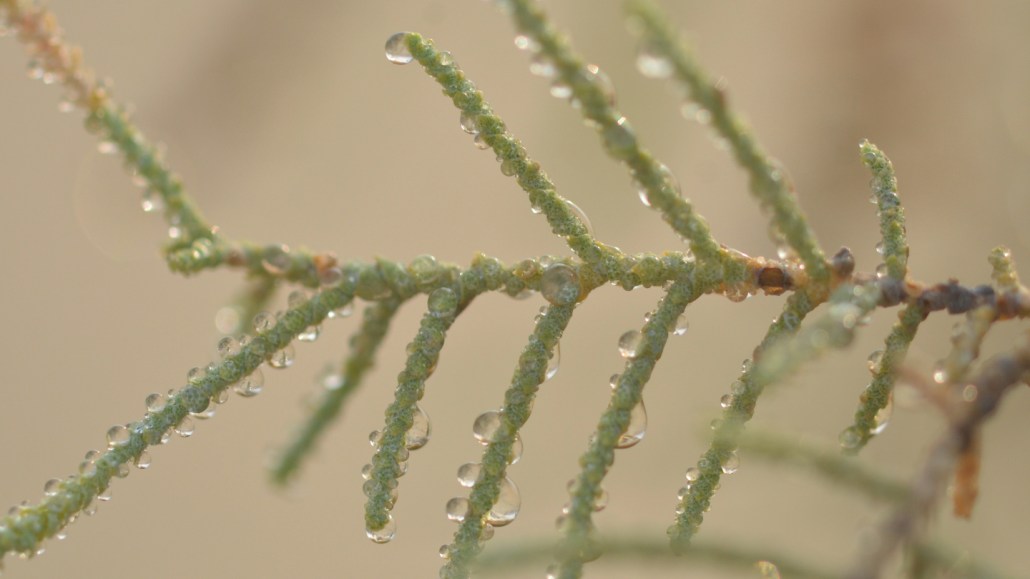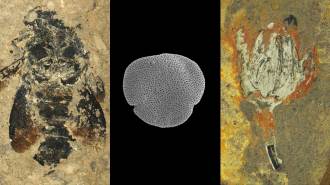
The leaves of this Athel tamarisk secrete salts that soak up condensation.
Marieh Al-Handawi
- More than 2 years ago
Sweat keeps some animals cool in scorching heat. Salty secretions also serve one desert shrub a refreshing sip of water.
The Athel tamarisk uses a special selection of salts excreted from its leaves to pull water from the air, researchers report October 30 in the Proceedings of the National Academy of Sciences. This study provides new insights into the clever chemical strategies that plants have evolved to survive in harsh environments.
The Athel tamarisk (Tamarix aphylla) thrives in the arid, salt-rich soils of coastal flats across the Middle East. That’s because the tamarisk is a halophyte, a type of plant that secretes excess salt in concentrated droplets from glands in its leaves. The moisture from these briny excretions dissipates in the heat of the day, leaving the tamarisk encrusted in white crystals that shake off in the wind.
While driving through the hot, humid deserts of the United Arab Emirates, materials scientist Marieh Al-Handawi of New York University Abu Dhabi noticed water condensing on these crystals. There are lots of plants with leaf structures adapted to attract liquid water from fog. But Al-Handawi, who looks to nature for strategies to tackle water scarcity, suspected that the chemical composition of the excreted salts might have something to do with the dew.
To investigate, Al-Handawi and her team recorded time-lapse videos of Athel tamarisk plants in their natural habitat. These recordings showed that salt crystals that form from daytime excretions swell with water at night. Back in the lab, the researchers found that at 35° Celsius and 80 percent relative humidity, a naturally encrusted branch collected 15 milligrams of water on its leaves after two hours, while a washed branch yielded only about one-tenth as much.
“This result was conclusive to us,” Al-Handawi says, “because it proved salts are the main contributor to the water harvesting, and it’s not the surface of the plant.” What’s more, the researchers observed dew form on the crystals down to just 50 percent relative humidity.
When the scientists scrutinized the mineral makeup of the tamarisk’s saline sprinkles, they found more than 10 different types of salt all crystallized together. These crystals are made mostly of sodium chloride and gypsum. Yet the researchers also spotted traces of a secret ingredient: lithium sulfate. This mineral is exceptionally good at taking in water and at much lower humidity than either sodium chloride or gypsum. While sodium chloride and gypsum bring in the largest volumes of water, the addition of lithium sulfate to the mineral mélange, the researchers say, helps explain how the tamarisk collects water even at low humidity.
“This paper provides a new level of detailed understanding of how some desert plants can both excrete salt and use it to take up water from the air into leaves,” says plant physiologist and ecologist Lawren Sack of UCLA, who was not involved in the study.
He is excited to see the chemical complexity of the salts involved. Desert plants have evolved intricate chemical strategies to squeeze every last drop of water from the environment, he says, and most of those systems await discovery.
Al-Handawi agrees, noting that the salt recipe may differ across regions and seasons. It makes her hopeful, she says, that there are other exciting water-harvesting materials waiting to be found in the desert.






